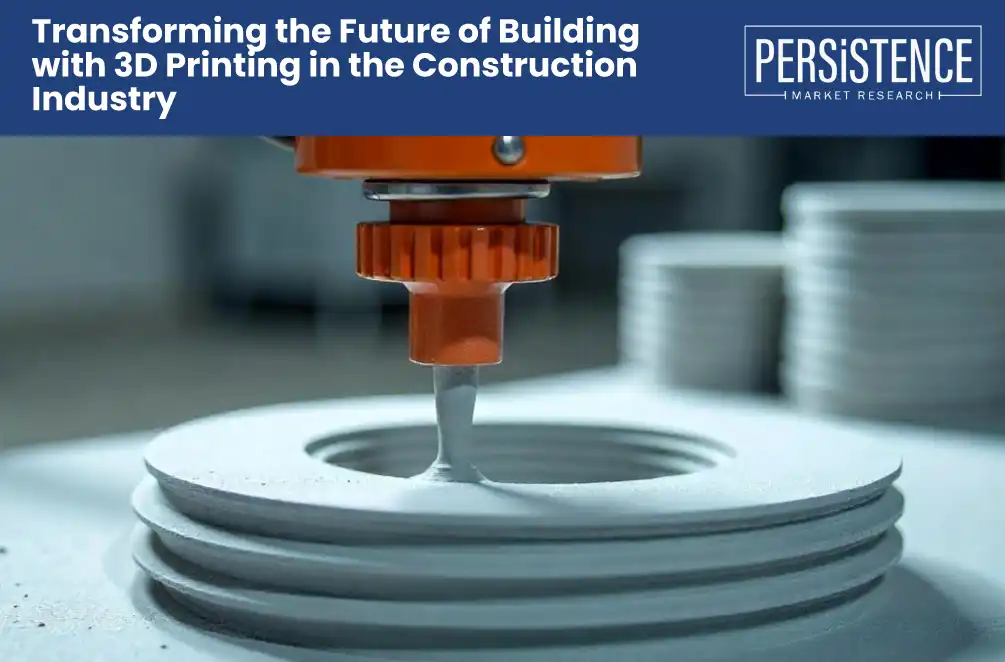- Blog
- 3d Printing In Construction
Transforming the Future of Building with 3D Printing in the Construction Industry
Published On : 11 Jul 2025
3D printing, also known as additive manufacturing, is rapidly redefining various industries, and construction is no exception. Originally developed for prototyping and manufacturing small components, 3D printing has now been scaled to build entire structures using innovative materials and robotic precision. In the construction sector, this technology holds the promise of revolutionizing how buildings are designed, developed, and delivered.

What is 3D printing, and how it works?
3D printing is a process in which material is deposited layer by layer to form a three-dimensional object based on a digital model. In contrast to traditional subtractive manufacturing methods, which involve cutting away material, 3D printing builds up material only where it’s needed. The process begins with a CAD (Computer-Aided Design) file, which is then translated into instructions for the printer.
In the construction industry, 3D printing typically involves large-scale printers that extrude concrete or other building materials to form structural elements or even entire buildings. These printers are either fixed-frame systems or robotic-arm systems that can move freely to print in multiple directions.
How is 3D printing being used in construction today?
3D printing is used in various facets of the construction industry, from prototyping and prefabrication to building full-scale residential and commercial structures. It is especially popular in experimental architecture, affordable housing, and disaster relief infrastructure due to its speed and flexibility. Notable examples include 3D-printed homes in the United States, the Netherlands, and the UAE, showcasing the technology’s potential to construct habitable structures in a fraction of the time required by traditional methods.
Companies are using 3D printing to produce complex structural components that would be time-consuming or costly to create using conventional means. Bridges, decorative elements, and architectural structures are manufactured with accuracy and little wastage.
What materials are used in 3D printed construction?
The most common material used in 3D printed construction is a quick-drying concrete or cementitious mix that can be processed consistently and hold its shape. These mixes often include additives to improve flowability, bonding, and structural integrity. Other materials being explored include geopolymer concrete, recycled plastic blends, and sustainable bio-based materials like clay and hempcrete.
What are the key benefits of 3D printing in construction?
One of the most significant is speed; entire homes can be printed in a short amount of time. Cost reduction is another compelling benefit, as automation minimizes labor costs and material waste. 3D printing also allows for greater design freedom, enabling the creation of complex geometries that are difficult or impossible to achieve with traditional construction methods.
What challenges and limitations does the industry face?
Regulatory and code compliance is one of the major hurdles, as most building standards are designed for traditional construction methods. The lack of standardized materials and testing protocols makes it difficult to ensure safety and durability at scale.
Another limitation is equipment cost and maintenance. Large-scale 3D printers are expensive and require skilled operators, limiting access for small and mid-sized firms. The technology also has limitations in multi-story construction, as most systems are currently optimized for low-rise structures.
How does 3D printing impact the labor market in construction?
3D printing has the potential to reshape the construction labor market. On one hand, it can reduce the demand for low-skill manual labor in repetitive tasks, but on the other, it creates opportunities for high-skill jobs in robotics, software programming, and materials science. The transition will require significant workforce retraining and education.
Rather than eliminating jobs, the technology is likely to shift the nature of work, emphasizing digital skills and interdisciplinary collaboration. As adoption grows, construction firms will need to invest in training to ensure their workforce is prepared for the demands of automated building processes.
Is 3D printing sustainable for the future of construction?
Sustainability is a driving force behind the adoption of 3D printing in construction. The ability to use localized materials, minimize waste, and reduce carbon emissions through optimized designs makes 3D printing a powerful tool in sustainable building. Moreover, 3D printing supports modular and adaptive design, reducing the environmental impact of construction throughout a building’s lifecycle.
What does the future hold for 3D printed construction?
The future of 3D printing in construction looks promising, with the technology poised to become a mainstream solution for certain types of projects. As regulations evolve and material science advances, we can expect broader acceptance and integration into standard construction practices. Innovations such as AI-driven design, drone-based site scanning, and robotic collaboration will further enhance the efficiency and scalability of 3D printed buildings.
In the next decade, we may see 3D printing play a key role in smart cities and zero-energy buildings. Its versatility makes it suitable not just for housing, but also for infrastructure, commercial properties, and temporary shelters.
Industry Report

Request Report Sample
Your privacy is important to us; your data is secure
Contact Us
Latest Reports
-
Piezoresistive Pressure Sensor Market by Sensor Type (Absolute, Gauge, Differential, Sealed), Pressure Range (Low Pressure (<10 kPa), Medium Pressure (10 kPa – 1000 kPa), High Pressure (>1000 kPa)), End-Use Industry (Automotive & Transportation, Industrial Manufacturing, Healthcare, Aerospace & Defense, Electronics) and Regional Analysis for 2026-2033
-
Aquarium Accessories Market by Product Type (Filtration Items, Lights & Hoods, Temperature Control Systems, Others), End-User (Residential, Commercial), Distribution Channel (Online, Offline), and Regional Analysis for 2026-2033
-
Oxygen Therapy Market by Product Type (Compressed Oxygen, Concentrated Oxygen, Liquid Oxygen), Disease (Respiratory Disorder, Cardiovascular Disease, Sleep Apnea, Pneumonia), End-User (Hospitals, Home Healthcare, Clinics), and Regional Analysis for 2026-2033
-
Air Curtains Market by Product Type (Non‑Recirculating, Recirculating, Heated, Others), Airflow Capacity (Up to 500 m³/h, 500–1000 m³/h, 1000–1500 m³/h, Above 1500 m³/h), Application (Commercial, Industrial, Residential, Others), and Regional Analysis for 2026–2033
-
Personalized Stationery Market by Product type (Storage & Filling Products, Paper-Based Products, Drawing & Writing Instruments, Accessories, Bags, Others), Application (Educational Institutes, Corporate Offices, Personal Use, Hospitals, Others), and Regional Analysis for 2026–2033
